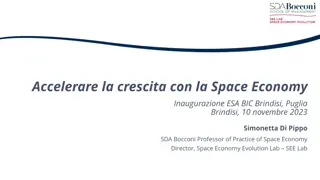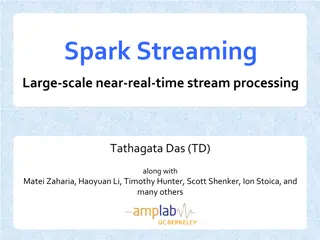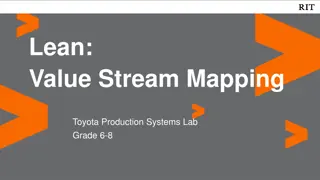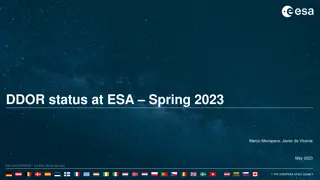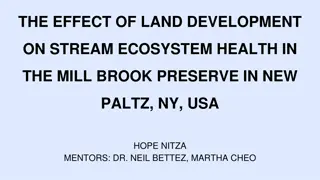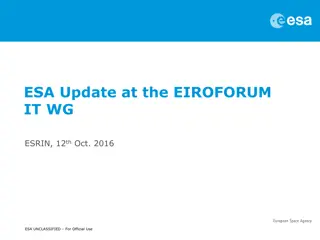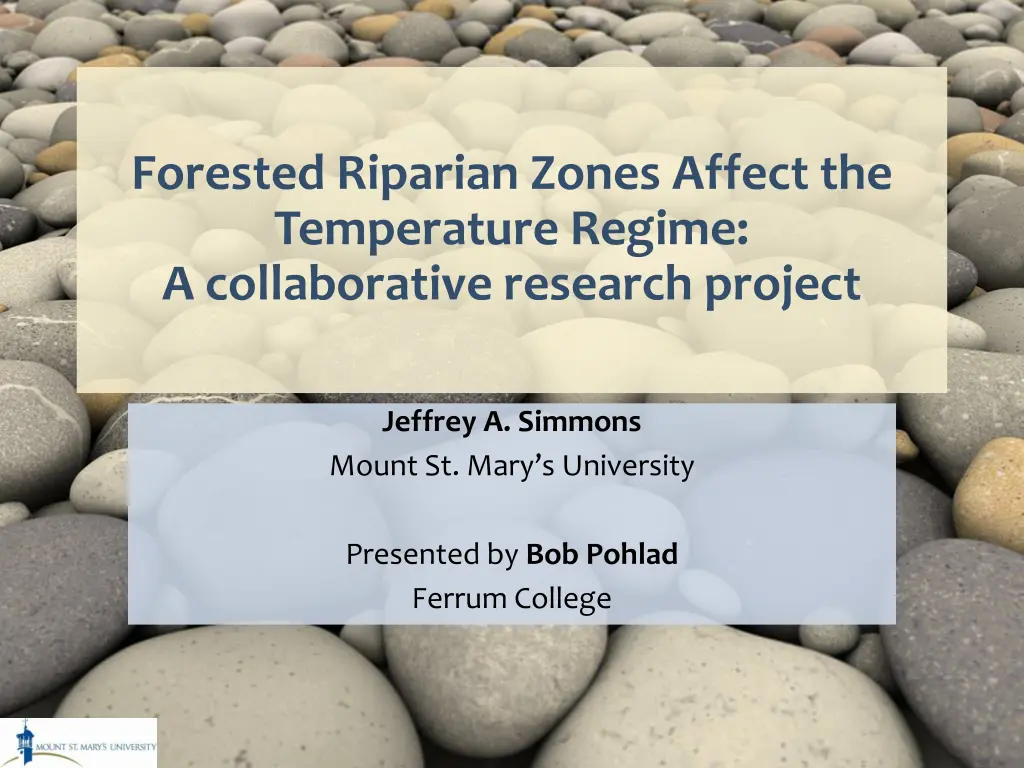
Forested Riparian Zones Influence Temperature Regime
Explore the collaborative research project by Jeffrey A. Simmons and Bob Pohlad on how forested riparian zones affect temperature conditions. The study design, research results, participants, and conclusions are detailed, highlighting the cooling effect and reduced temperature extremes in forested areas compared to open segments. Groundwater inputs and light levels play significant roles in temperature variability.
Download Presentation

Please find below an Image/Link to download the presentation.
The content on the website is provided AS IS for your information and personal use only. It may not be sold, licensed, or shared on other websites without obtaining consent from the author. If you encounter any issues during the download, it is possible that the publisher has removed the file from their server.
You are allowed to download the files provided on this website for personal or commercial use, subject to the condition that they are used lawfully. All files are the property of their respective owners.
The content on the website is provided AS IS for your information and personal use only. It may not be sold, licensed, or shared on other websites without obtaining consent from the author.
E N D
Presentation Transcript
Forested Riparian Zones Affect the Temperature Regime: A collaborative research project Jeffrey A. Simmons Mount St. Mary s University Presented by Bob Pohlad Ferrum College
Overview 1. Study Design 2. Research Results 3. Two Curricula 4. Assessment 5. Reflections 08/15/2014 2
1. Study Design 100-m stream segments 1 Forested and 1 Open, otherwise similar Temperature dataloggers at beginning and end of segments Weather stations at midpoint Record temperatures every 20 min, June-Sept, 2011 Forested segment Weather station Open segment Temperature datalogger 08/15/2014 3
1. Study Design Common protocols used at 11 sites across North America 11 10 9 8 7 4 3 6 5 2 1 08/15/2014 4
Participants Michelle Anderson U of Montana Western Thomas Murray Elizabethtown College William Dress Robert Morris University John Niedzwicki Belmont University Catherine Hanna Robert Morris University Darlene Panvini Belmont University Dan Hornbach Macalester College Bob Pohlad Ferrum College Alida Janmaat U of Fraser Valley Frank Kuserk Moravian College Jeffrey Simmons Mount St. Mary s James G. March Washington & Jefferson College Carolyn Thomas Ferrum College Thomas Murray Elizabethtown College Liette Vasseur Brock University 08/15/2014 5
1. Study Design Calculated several temperature parameters for each site (e.g., daily maximum T, daily fluctuation) Compared Forested vs. Open with paired t-test Used heat budget model (SSTEMP) to examine components of heat flux 08/15/2014 6
2. Research Results 10 8 Difference in Daily Range (C) 6 4 2 0 -2 -4 1 2 3 4 5 6 7 8 9 10 11 Site 08/15/2014 7
2. Research Results Overall, forested segments were cooler and had less extreme temperatures than open segments Amount of light was the main cause of daily variability and site differences Groundwater inputs can offset canopy/light effects. 08/15/2014 8
2. Research Results Manuscript has been published (open access) A comparison of the stream temperature regime under forested and non-forested riparian zones at eleven sites across North America Simmons, et al. 2014. River Research and Applications (online) 08/15/2014 9
3. Two Curricula Two inquiry-driven lab activities were developed to provide a link between the research project and teaching. Each includes student instructions, Instructor tips, worksheets, analysis questions, answer key and data from the project (erenweb.org/education/curricula). Instructors can replicate the study at their own site and compare their results with those of the EREN study. 08/15/2014 10
4. Assessment Pre-/Post-content test was administered to 58 students at six institutions Overall student scores increased by 28% (paired t- test, p < 0.001). Scores from 4 questions related to spatial scale increased by 22% (p < 0.01) 08/15/2014 11
5. Reflections Compared to other EREN projects Limited duration, limited commitment for participants Less student involvement (automated data collection) Faster publication Similar cost (low) Common written protocol was the key to success Maintaining equipment (floods, vandalism) and downloading frequently were challenges. 08/15/2014 12
The End 08/15/2014 13


